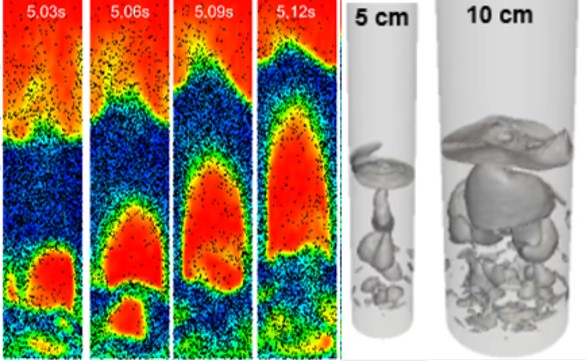Numerical Simulation of reacting multiphase flow and high-temperature processes

Numerical simulation has been established as an essential scientific discipline in the past decades, which bridges the gap between experiment and theory. Computational design and optimization have a high potential to significantly reduce the time scales and investment costs of the development processes of new products.
Highly-resolved numerical simulations accompanied by high-performance computing (HPC) techniques are extensively used to study reacting multi-phase flow and high-temperature processes at ITC, for instance, for pyrolysis, gasification and combustion. The multi-physics, multi-phase and multi-scale simulations of such processes, with timely and spatially resolved chemical-physical fields provide a detailed insight into the underlying chemo-physical mechanisms as well as their mutual interactions. The knowledge gained from said numerical simulations can be beneficially used for process optimization and intensification.
• Computational fluid dynamics (LES, DNS, Euler-Lagrangian, VoF, CPFD)
• Numerical simulation of turbulent, chemically reacting flowsn
• High-temperature processing technology (combustion, pyrolysis, gasification)
• High-performance computing
Simulation of a Fluidized bed: cross-section view of sand-filled fluidized bed reactors with different operating parameters and diameters. Study of scalability of the pyrolysis reactor.
